How to build a Gabion Wall?
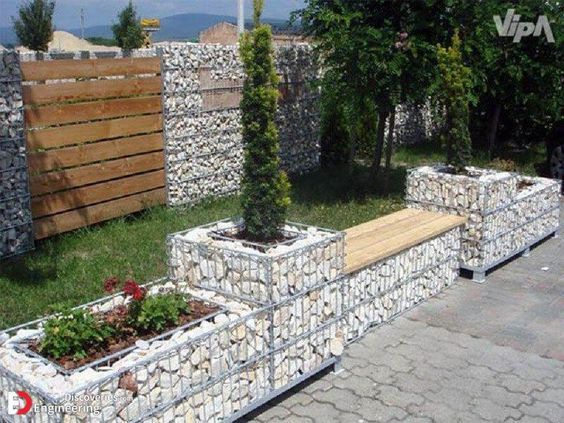
Building a gabion wall is an innovative and stylish way to create structures for landscaping or home projects. Here's a detailed guide on how to make one, complete with ideas and critical considerations:
1. Planning and Design of Gabion Walls
The planning and design of a gabion wall require a thoughtful approach. Balancing functionality with aesthetics while considering site-specific conditions and landscape integration is critical. A well-planned gabion wall serves its intended purpose and enhances the property's beauty and value.
Understanding the Purpose
Firstly, determine the primary purpose of the wall. Is it for aesthetic enhancement, creating a boundary, or serving as a retaining structure? The function dictates the design specifics, such as height, thickness, and location. For instance, retaining walls require more structural integrity compared to decorative walls.
Site Analysis
Choose a stable, level site for your gabion wall. Consider factors like soil type, drainage patterns, and proximity to existing structures. Assess the potential impact on the surrounding area, including how the wall might alter natural water flow or affect neighboring properties. For retaining walls, understanding soil pressure and slope stability is essential.
Design Considerations
Once the purpose and site are clear, focus on the wall's design. Gabion walls offer flexibility in shape and size. Depending on your landscape and aesthetic preferences, they can be straight, curved, tiered, or sculptural.
Size and Scale
The wall's dimensions should be proportional to the space. A large garden can accommodate a taller or longer wall, while a smaller space might benefit from a shorter, decorative feature.
Choice of Materials
The type and size of stones or other fill materials affect the wall's appearance and stability. Larger stones are typically used to retain walls for added strength, while more minor, colorful stones might be chosen for decorative walls.
Integration with Landscape
Consider how the wall will interact with existing landscape elements. Will it be a standalone feature or integrated with other structures like patios or garden beds? The design should complement and enhance the overall landscape theme.
Aesthetic Appeal
Gabion walls are as much about aesthetics as they are about function. The visible stone fill offers an opportunity to add a decorative element. Choosing different colors, textures, or types of stones can create a unique look. Incorporating patterns or alternating other fill materials can turn a simple gabion wall into a work of art.
Technical Aspects
Pay attention to technical details like the type and strength of the wire mesh. The mesh size should be appropriate for the fill material to prevent stone loss. Also, consider additional support structures, especially for taller walls.
2. Materials Needed
It would help to have durable gabion baskets made of galvanized steel with an appropriate mesh size for a gabion wall. The fill material, usually stones or rocks, should be weather-resistant and aesthetically pleasing. Choose stones that complement your landscape, considering color and texture variation. Other materials include sturdy gloves, wire cutters for assembling the baskets, levels to ensure eveness and landscapping fabric.Selecting high-quality materials ensures longevity and reduces maintenance needs, making your gabion wall a functional and attractive feature in your landscape.
3. Foundation Preparation
Foundation preparation is critical for a stable gabion wall. Start by excavating a trench, the depth of which depends on the wall's height—generally, a quarter of the wall's height. Fill the trench with a compacted base of gravel or hardcore to provide a solid and level foundation. This step is crucial for preventing the settling or tilting of the wall. Ensure that the foundation extends beyond the wall's width for additional support. Proper foundation preparation is critical to the wall's longevity, preventing future issues like misalignment or collapse, especially in load-bearing or retaining wall applications.
4. Assembling the Gabions
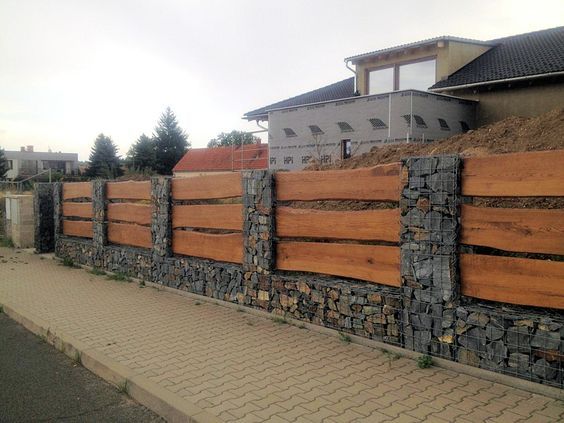
Assembling gabions involves positioning the wire baskets at the designated location and securely interlocking them using galvanized wire. It's a crucial step, and that's why it is essential to do it with great care by following the instructions properly:
Unpacking and Layout
Unpacking: Carefully unpack the gabion baskets. They usually come flat-packed.
Layout: Lay out the sections on a flat surface. This includes the base, sides, ends, and lids.
Assembling the Baskets
Shaping the Basket: Stand up the sides, ends, and base to form the box shape. Most gabion baskets are designed to be easily bent into shape by hand.
Securing Corners and Edges:
Use the provided ties or spirals to secure all corners and edges. This is crucial for the structural integrity of the basket.
Special Tools:
For larger projects, a gabion assembly tool or hog ring plier can speed up the process and ensure a more secure assembly.
Joining multiple baskets:
If your project requires multiple baskets, place them adjacent to each other.
Securely tie the adjoining edges together. This ensures they act as one continuous structure, which is significant for retaining walls.
4. Filling the baskets
Type of Fill Material:
Choose appropriate stones or other materials for filling. Ensure they are larger than the mesh size to prevent them from falling out.
Filling Method: Begin filling the baskets with the chosen material. Hand-placing the stones at the faces is often recommended for a neater appearance.
Layering: Fill the baskets in layers, compacting each layer before adding the next. This prevents voids and ensures stability.
Closing the Baskets
Once filled, close the lid of the basket. Secure the lid with ties or spirals, ensuring it's tightly closed to prevent the fill material from escaping.
Tips for Stability
Internal Bracing: To prevent bulging, internal bracing with wires or rods might be necessary for taller baskets.
Checking for Gaps: Regularly check for gaps in the fill material and fill them to maintain the shape and strength of the wall.
Uniform Distribution: Ensure the weight is uniformly distributed to avoid tilting or misalignment.
Safety Considerations
Wear gloves and safety glasses during assembly to protect against sharp wires. Ensure the area around the assembly is clear and safe for working.
Final Inspection
Once assembled and filled, inspect the gabion baskets for any loose ties or protruding wires. Make any necessary adjustments to ensure the structure is secure and stable.
Following these detailed steps, you can assemble gabion baskets for your project, ensuring they are well-constructed, stable, and aesthetically pleasing.
6. Creative Ideas and Tips
1. Plant Integration ideas
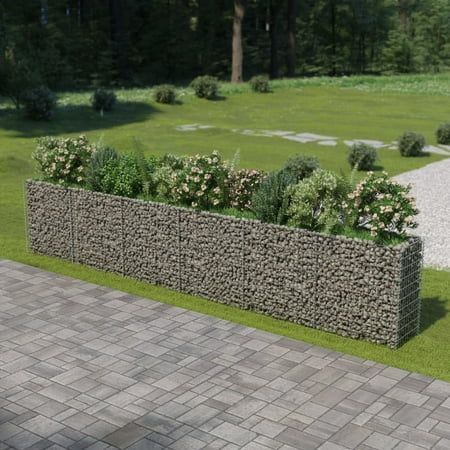
Integrating plants into and around gabion structures can enhance their aesthetic appeal, creating a harmonious blend of natural and man-made elements. When selecting plants for integration, choosing species that complement the gabion environment is essential. This includes considering the local climate, soil conditions, and the amount of sunlight the area receives. Resilient shrubs and flowers that require minimal maintenance, like native species or drought-tolerant plants, are ideal choices. Planting in the gabions themselves involves creating small soil pockets within the structure, where smaller, robust plants can thrive. Around the gabions, larger shrubs and flowering plants can be planted to soften the hard edges of the stone and add color and texture. This approach not only enhances the visual appeal of the gabion walls but also encourages biodiversity and can provide habitats for local wildlife. The end result is a beautiful, living structure that changes and grows over time, fully integrating the gabion into the natural landscape.
2. Lighting: Enhancing Gabion Walls at Night
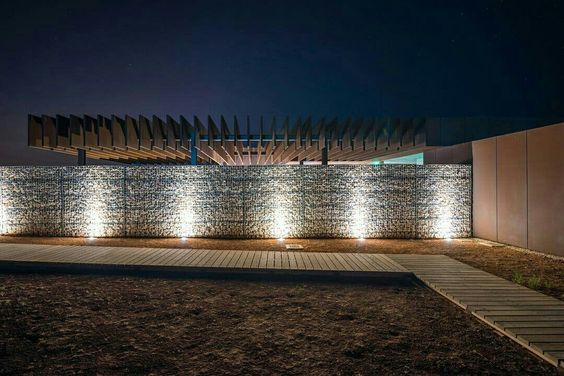
Adding lighting to gabion walls transforms them into striking landscape features at night. The strategic placement of lights can accentuate the texture and color of the stones, creating a dramatic visual effect. Consider using LED spotlights at the base to cast an upward glow, highlighting the wall's structure. Solar-powered lights are an eco-friendly option, offering ease of installation without electrical wiring. For a more subtle ambiance, embed small LED lights within the gabion, allowing the light to seep through the stones. This not only enhances the beauty of the wall but also adds safety and visibility to outdoor areas after dark.
3. Mixed Materials: Creating a Unique Look
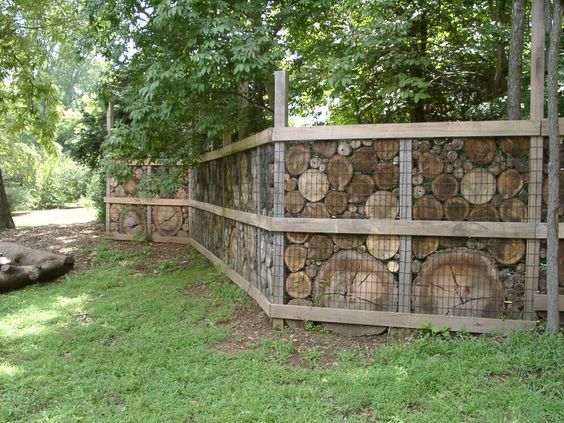
Using a mix of different stones or materials in gabion walls can create a distinctly unique and artistic look. Experiment with various sizes, colors, and textures of stones to achieve a visually appealing mosaic effect. For a more avant-garde design, intersperse unconventional materials like colored glass, ceramic pieces, or recycled materials like metal objects or bricks. The key is to ensure that all materials are durable and weather-resistant. This approach allows for a high degree of customization, enabling the gabion wall to reflect personal style and complement the surrounding landscape.
4. Seating: Functional and Aesthetic Integration
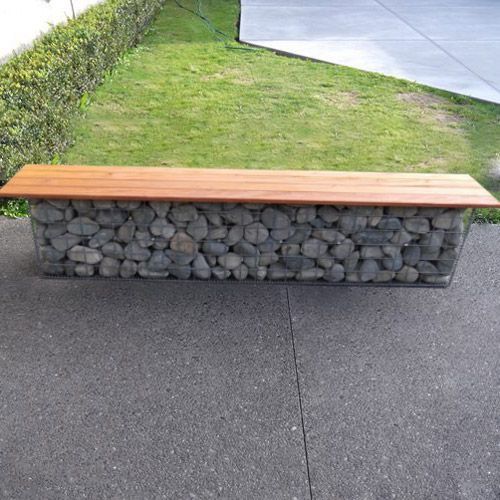
Incorporating seating into gabion walls is a practical way to add functionality while enhancing the landscape's aesthetic. The top portions of gabion walls can be fitted with wooden or stone slabs to create benches. This integration serves as both a resting spot and an intriguing design element. When using wood, choose weather-resistant types like teak or cedar; flat, smooth slabs ensure comfort for stone. These seating areas can become social spots in gardens or peaceful retreats in private landscapes. The natural look of gabion materials combined with wood or stone creates an inviting and harmonious blend.
5. Water Features: Harmonious Combinations
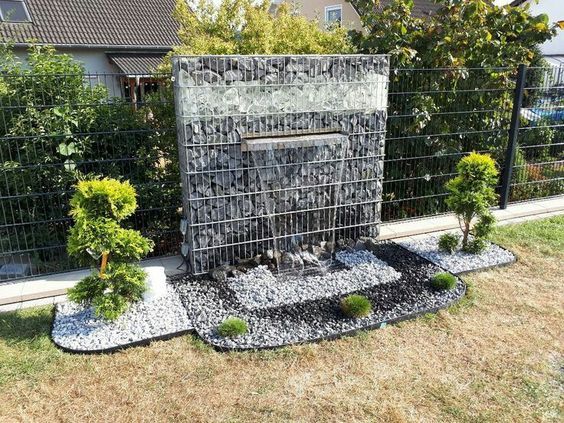
Designing gabion walls around ponds, fountains, or waterfalls adds a dynamic element to the landscape. The gabions' rugged texture contrasts beautifully with the water's fluidity, creating a sense of balance and tranquility. For ponds, gabion walls can serve as retaining structures or decorative borders. Incorporating a fountain or waterfall with a gabion backdrop can produce a stunning visual and auditory experience as water cascades over the stones. This combination enhances the aesthetic value of the space and contributes to a calming atmosphere, making it a perfect addition to gardens, courtyards, or communal outdoor areas.
7. Maintenance
Maintaining a gabion wall involves periodic inspections to ensure the wire cages' integrity and the fill material's condition. Check for any signs of corrosion or damage to the wire mesh, especially in harsh weather conditions. If any settling of stones occurs, additional filling might be required to maintain the wall's shape and stability. Vegetation growing into the structure should be managed to prevent damage. Regular maintenance ensures the longevity of the wall and preserves its aesthetic appeal. Although gabion walls are known for their durability, proactive care can prevent minor issues from escalating into major repairs.
